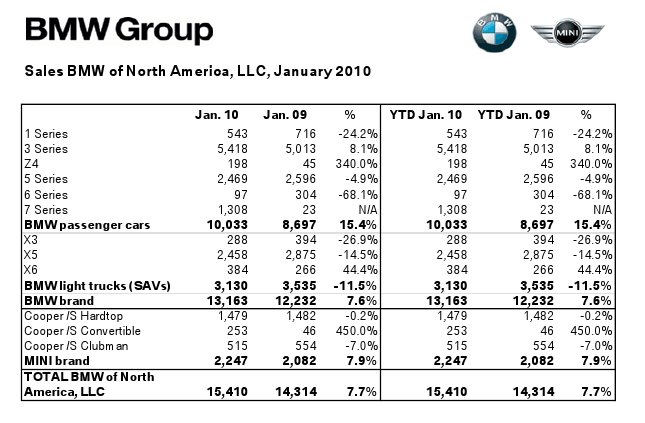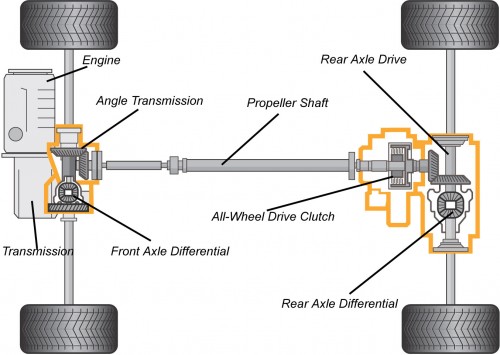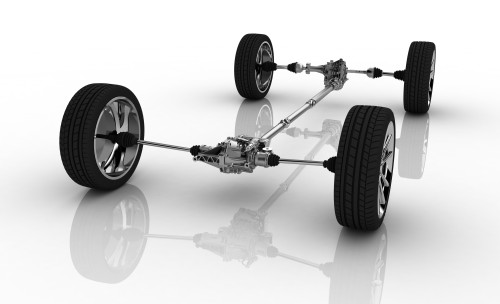GM released a fairly upbeat sales report for January:
DETROIT – U.S. dealers for GM’s brands – Chevrolet, Buick, GMC and Cadillac – reported retail sales of 102,420, up 3 percent compared to January 2009, and 145,098 total sales (up 30 percent). These results were driven by the continued strong growth of new GM crossovers and passenger cars. For the month, GM dealers reported 146,825 total sales (including other brands), representing a total sales increase of 14 percent from the previous year.
However, the news at Cadillac seems much more serious.
Per selling day Cadillac sales overall are up 7.6% for Jan 2010 compared with Jan 2009. However, car sales and truck sales continue to be much lower than last year. Only the exceptional sales of the Crossover Cadillac SRX saved the month, and even the SRX was off from December.
Cadillac has to figure out how to move some cars even before the new CTS Coupes arrive this summer.
On a bright note, Buick outsold Cadillac for January on the strength of the Buick cars, Lacrosse and Lucerne.
Here are the Cadillac and Buick Sales figures in total:
| *S/D Curr: 24 | January | (Calendar Year-to-Date) | |||||||
| January – January | |||||||||
| *S/D Prev: 26 | 2010 | 2009 | % Chg Volume | %Chg per S/D | 2010 | 2009 | %Chg Volume | ||
| Buick Total | 10,061 | 6,969 | 44.4 | 56.4 | 10,061 | 6,969 | 44.4 | ||
| Cadillac Total | 8,440 | 8,499 | -0.7 | 7.6 | 8,440 | 8,499 | -0.7 | ||
| GM Car Deliveries by Marketing Division | |||||||||
| 2010 | 2009 | %Chg Volume | %Chg per S/D | 2010 | 2009 | %Chg Volume | |||
| Buick Total | 5,986 | 4,248 | 40.9 | 52.7 | 5,986 | 4,248 | 40.9 | ||
| Cadillac Total | 3,452 | 5,251 | -34.3 | -28.8 | 3,452 | 5,251 | -34.3 | ||
| GM Light Truck Deliveries by Marketing Division | |||||||||
| 2010 | 2009 | %Chg Volume | %Chg per S/D | 2010 | 2009 | %Chg Volume | |||
| Buick Total | 0 | 9 | ***.* | ***.* | 0 | 9 | ***.* | ||
| Cadillac Total | 1,754 | 2,360 | -25.7 | -19.5 | 1,754 | 2,360 | -25.7 | ||
| GM Crossover Deliveries by Marketing Division | |||||||||
| 2010 | 2009 | %Chg Volume | %Chg per S/D | 2010 | 2009 | %Chg Volume | |||
| Buick Total | 4,075 | 2,712 | 50.3 | 62.8 | 4,075 | 2,712 | 50.3 | ||
| Cadillac Total | 3,234 | 888 | 264.2 | 294.5 | 3,234 | 888 | 264.2 | ||
| * Twenty-four selling days (S/D) for the January period this year and twenty-six for last year. | |||||||||
Broken out by model:
| January | (Calendar Year-to-Date) | ||||||||
| January – January | |||||||||
| 2010 | 2009 | % Chg Volume | %Chg per S/D | 2010 | 2009 | %Chg Volume | |||
| Selling Days (S/D) | 24 | 26 | |||||||
| LaCrosse | 4,246 | 1,489 | 185.2 | 208.9 | 4,246 | 1,489 | 185.2 | ||
| Lucerne | 1,740 | 2,759 | -36.9 | -31.7 | 1,740 | 2,759 | -36.9 | ||
| Buick Total | 5,986 | 4,248 | 40.9 | 52.7 | 5,986 | 4,248 | 40.9 | ||
| CTS | 2,565 | 3,418 | -25.0 | -18.7 | 2,565 | 3,418 | -25.0 | ||
| DTS | 618 | 1,362 | -54.6 | -50.8 | 618 | 1,362 | -54.6 | ||
| STS | 233 | 413 | -43.6 | -38.9 | 233 | 413 | -43.6 | ||
| XLR | 36 | 58 | -37.9 | -32.8 | 36 | 58 | -37.9 | ||
| Cadillac Total | 3,452 | 5,251 | -34.3 | -28.8 | 3,452 | 5,251 | -34.3 | ||
| January | (Calendar Year-to-Date) | ||||||||
| January – January | |||||||||
| 2010 | 2009 | % Chg Volume | %Chg per S/D | 2010 | 2009 | %Chg Volume | |||
| Selling Days (S/D) | 24 | 26 | |||||||
| Rainier | 0 | 3 | ***.* | ***.* | 0 | 3 | ***.* | ||
| Terraza | 0 | 6 | ***.* | ***.* | 0 | 6 | ***.* | ||
| Buick Total | 0 | 9 | ***.* | ***.* | 0 | 9 | ***.* | ||
| Escalade | 1,237 | 1,353 | -8.6 | -1.0 | 1,237 | 1,353 | -8.6 | ||
| Escalade ESV | 396 | 672 | -41.1 | -36.2 | 396 | 672 | -41.1 | ||
| Escalade EXT | 121 | 335 | -63.9 | -60.9 | 121 | 335 | -63.9 | ||
| Cadillac Total | 1,754 | 2,360 | -25.7 | -19.5 | 1,754 | 2,360 | -25.7 | ||
| January | (Calendar Year-to-Date) | ||||||||
| January – January | |||||||||
| 2010 | 2009 | % Chg Volume | %Chg per S/D | 2010 | 2009 | %Chg Volume | |||
| Selling Days (S/D) | 24 | 26 | |||||||
| Enclave | 4,075 | 2,712 | 50.3 | 62.8 | 4,075 | 2,712 | 50.3 | ||
| Rendezvous | 0 | 0 | ***.* | ***.* | 0 | 0 | ***.* | ||
| Buick Total | 4,075 | 2,712 | 50.3 | 62.8 | 4,075 | 2,712 | 50.3 | ||
| SRX | 3,234 | 888 | 264.2 | 294.5 | 3,234 | 888 | 264.2 | ||
| Cadillac Total | 3,234 | 888 | 264.2 | 294.5 | 3,234 | 888 | 264.2 | ||
BMW Jan sales chart:
BMW sales for Jan 2010 were also up 7.6% compared to 2009, with support from the sedans and SUVs.






